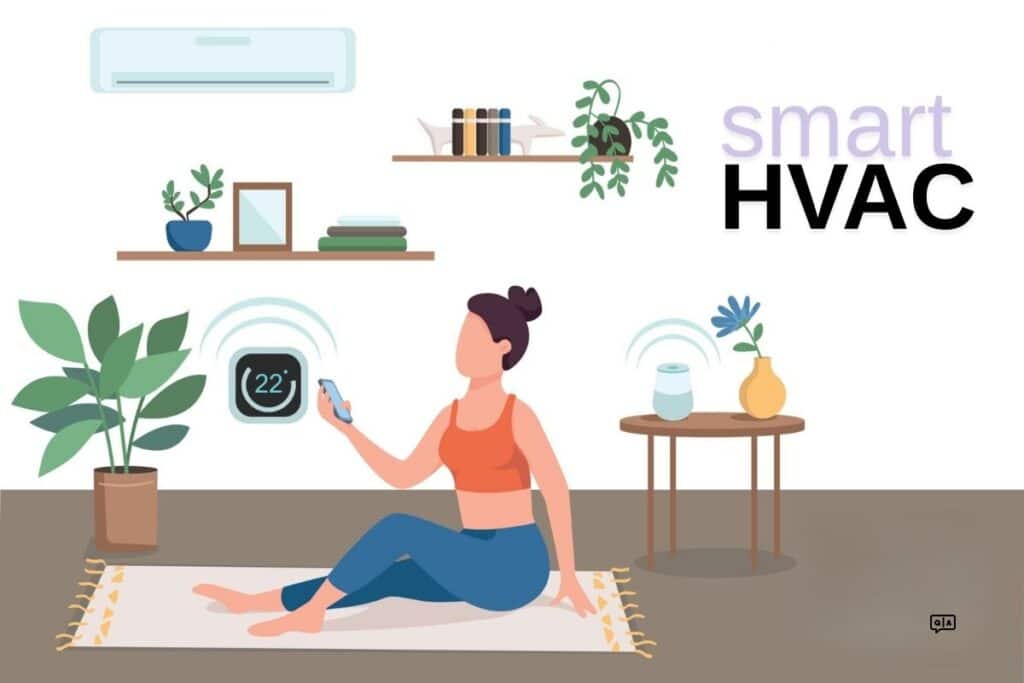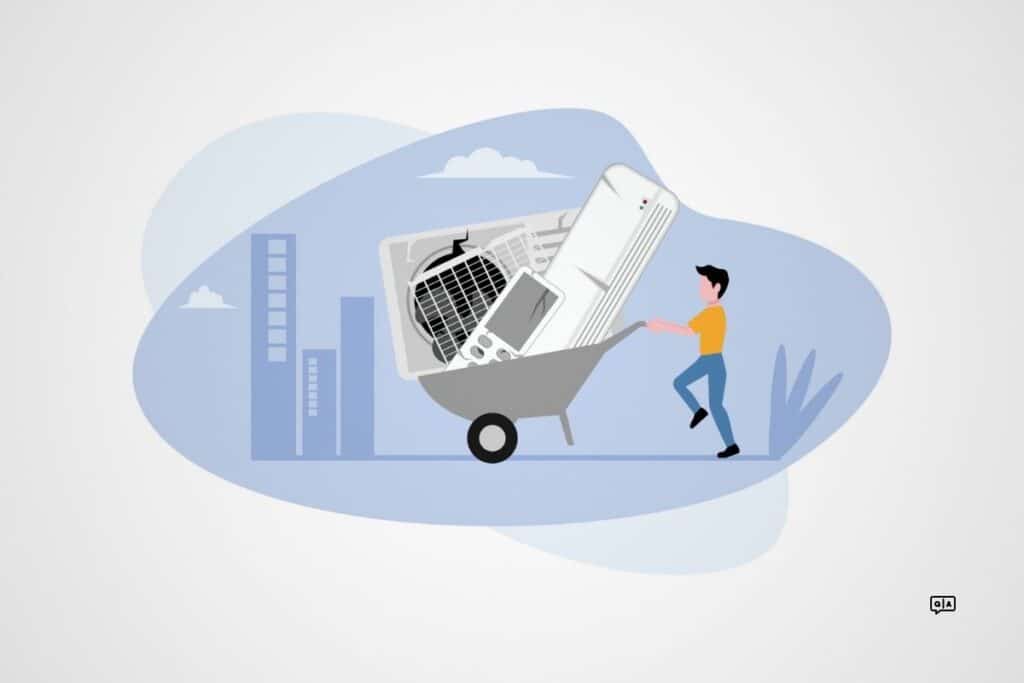Heating, Ventilation and Air Conditioning industry is a very vast business. Those who are looking to work in these fields as HVAC technicians can pursue this career path by enrolling in HVAC training programs. The market for HVAC engineers is likely to rise over the next decade as the HVAC sector expands.
Due to technological breakthroughs and improvements, the HVAC sector has changed dramatically throughout the years. Who’d have guessed that one day we’d be able to operate personal air conditioners with our voices? That would have been unthinkable a few years ago.
Consumer preferences have also influenced the HVAC business. Even though the purpose of HVACs is still to provide comfort, today’s clients are highly concerned about their heating and cooling devices’ ecological consequences. As a result, the HVAC sector has had to adjust to meet these and other developments.
The HVAC industry is growing in significant changes, associated with new market needs and sensitivities, as well as new technical possibilities. Most of them are represented in distinct HVAC industry trends that will influence the industry over the next several decades.
The primary purpose of HVAC systems is to offer thermal comfort and good air quality in residences and other enclosed places. This goal is more readily and efficiently achieved thanks to these new HVAC market trends. Continue reading to learn more about these trends and how businesses can prepare to adapt to them.
HVAC Industry Growth Superfast
According to an AHR Expo and ASHRAE Journal study, approximately 88% of HVAC sector respondents had a “good” or “great” business year in 2019, with 43 percent expecting 5-10 percent annual growth for their company. Another 23.5 percent predicted HVAC industry growth of more than 10%. This is a small decrease from the previous year’s poll, but it remains a pretty decent appraisal of present HVAC companies’ performance.
The HVAC sector’s latest employment statistics are unprecedented. HVAC companies employed 1.2 million workers in the United States in 2018, up more than 5% from 2017. The HVAC industry is expected to increase at a rate of 13% per year through 2028, indicating that the market is in good shape.
If the HVAC business wants to attract a new generation with the ability to fill its positions, it will be given at the rate at which the experienced Boomer Generation retire—it needs to consider much more about the job experience it offers. Corporate culture is critical to the success of Youngsters (as well as a growing amount of other workers—88 percent in total).
HVAC Market Trends
Keep an eye on these HVAC market trends to stay ahead of your competitors.
1. Eco-Friendly HVAC Systems
Today’s eco-friendly green initiatives are of huge interest. Everyone wants to save money and the earth from global warming). As a result, the demand for ecologically friendly HVAC devices is on the rise, including solar energy and wind farms being used to cut energy expenses.
Geothermal heating and cooling are also becoming more popular, as it reduces the need for hydrocarbon-based electricity. Instead, these heat pumps collect energy from the groundwater and surface water sources, such as ponds, to heat and cool buildings. Some buildings use a combination of gas and solar energy, allowing owners to effortlessly shift between both the two to control electricity bills. Thermally-driven air conditioners are already in the works.
Developing environmentally sustainable alternatives is an important aspect of the HVAC industry’s current and future growth. Going green is now an expense; as mentioned before, consumers are now interested in these kinds of systems and are prepared to invest more, and corporations build a socially responsible tale that distinguishes them among other less dedicated HVAC companies.
The following are some of the most important sustainable aspects that are progressively being implemented into HVAC systems:
- Developing technologies that allow customers to consume less energy while limiting heat loss or leaks
- Providing importance to the selection of materials and engineering properties that reduce overall carbon emissions of the systems
2. “SMART” HVAC
Automated systems go far beyond the IoT and connection potential by using the systems’ own data collecting and intelligence to operate HVAC systems without the need for people to intervene. The following are some of the current applications:

Preventative maintenance: data collection can aid in determining past performance and current state, as well as usage trends, in order to create a preventive maintenance system that prevents errors from occurring.
- Automated systems can use this data to decide when and where heat and cold are most needed, as well as to activate or deactivate smart blinds based on the location of the sun.
- Overall, the purpose of these HVAC industry trends is to improve the energy-saving capabilities of the systems while also improving the user’s convenience.
Because it is more accessible and smarter, technology is at the heart of several HVAC trends. Sensors that “speak” to one another are included in the HVAC designs that contractors might use nowadays. This means that diverse technologies in structures interact with one another. Motion detectors, for example, control the internal temperatures, moisture, and light.
These systems can also monitor exterior conditions such as temperature, moisture, light, and sun position. For example, if a portion of a structure isn’t exposed to sunlight, the unit will blast less air conditioning in the summer and more heat in the winter. If smart shades are installed, the system can control how the shades open and close based on the position of the sun.
3. Recyclable Materials in HVAC

For a variety of reasons, EPS (Expanded Polystyrene) substances rank among sustainable materials as firms and consumers hunt for innovative, eco-friendly choices for HVAC technical parts.
Amongst all the factors, EPS is a mono-material that is 100 percent recyclable. When compared to other plastic materials, EPS recycling is simple when the proper plans are implemented.
Because heat is used as a source of power and very little water is consumed, the EPS production process has a smaller carbon footprint when compared to other sources.
Simultaneously, there is little waste made throughout the production process because every unwanted item can be recycled. This material’s carbon emissions are also reduced by the fact that it contains only 2% polystyrene.
Because of their superior insulation capabilities, EPS and EPP parts assist limit energy loss and increasing Indoor Air Quality (IAQ) in HVAC systems. They prevent heat transfer while sustaining the optimal temperature for any HVAC system’s performance.
As a result, thermal energy is kept to a minimum, lowering user costs.
Logistics optimization is important not just for cost reduction, but also for energy conservation.
Reducing transportation space and weight to use less fuel are some of the proactive activities that organizations may look into in order to improve this sector. This can be accomplished by using lightweight HVAC materials such as EPS ( Expanded Polystyrene) or EPP (Expanded polypropylene).
4. Ductless HVAC Systems
It’s nearly tough to retrofit old houses with air conditioning, especially if there isn’t enough room to install ducting. Customers may find the cost of these improvements to be prohibitive in buildings with sufficient space. Ductless air – conditioning equipment serves as a workaround on both ends.
These little units can be installed almost anywhere, without the requirement for ductwork. Ductless Air conditioners are also ideal for modern infrastructures with ducting that has flaws and gaps that cause air leaks. Instead of paying for costly replacements, they can use ductless HVAC systems.
Update 2024
The HVAC industry is experiencing significant advancements driven by technological innovation and a focus on sustainability. Here are three prominent trends:
Integration of Artificial Intelligence (AI) and Internet of Things (IoT)
Adopting AI and IoT technologies transforms HVAC systems into intelligent networks capable of real-time monitoring and optimization. These systems can adjust settings based on occupancy and environmental conditions, enhancing energy efficiency and user comfort.
AI-driven analytics enable predictive maintenance by identifying potential system failures before they occur, reducing downtime and maintenance costs.
Increased Adoption of Heat Pump Technology
Heat pumps are gaining popularity as energy-efficient alternatives to traditional heating and cooling systems. They transfer heat rather than generate it, resulting in lower energy consumption and reduced greenhouse gas emissions.
- Check our heat pump review here.
Governments and organizations promote heat pump adoption through incentives and regulations to reduce carbon footprints.
Enhanced Focus on Indoor Air Quality (IAQ)
There is a growing emphasis on improving IAQ by implementing advanced filtration technologies, such as HEPA filters and UV-C light purification, to remove contaminants and pathogens from indoor environments.
HVAC systems are increasingly designed to monitor and control humidity, ventilation, and air purity, contributing to healthier indoor spaces and occupant well-being.
These trends reflect the HVAC industry’s commitment to leveraging technology and sustainable practices to meet evolving consumer demands and environmental standards.
Final Thought
The demand for environmentally friendly HVAC systems is being fueled by technological advancements.

Wireless gadgets will continue to rise in popularity as smartphones and tablets become more integrated. Additionally, new sensors and controls will improve security while also making HVAC systems more convenient. Furthermore, since people will be able to design more exact air conditioning system programs using HVAC systems that can measure indoor temperature and humidity, a growing tendency toward generating standard temperature control is expected.
High energy costs are putting a strain on businesses as well as household users. Commercial buildings have a larger surface area to heat and cool throughout the year. Homeowners aren’t the only ones looking for ways to reduce their carbon footprint. Green is becoming increasingly popular among businesses since it is cost-effective and demonstrates their commitment to social responsibility.
The market for HVAC engineers is likely to rise over the next decade as the HVAC sector expands. Furthermore, thermal engineering graduates are in high demand in the United States because of their experience in fields such as insulation, roofing technology, and solar energy air – conditioning projects.






